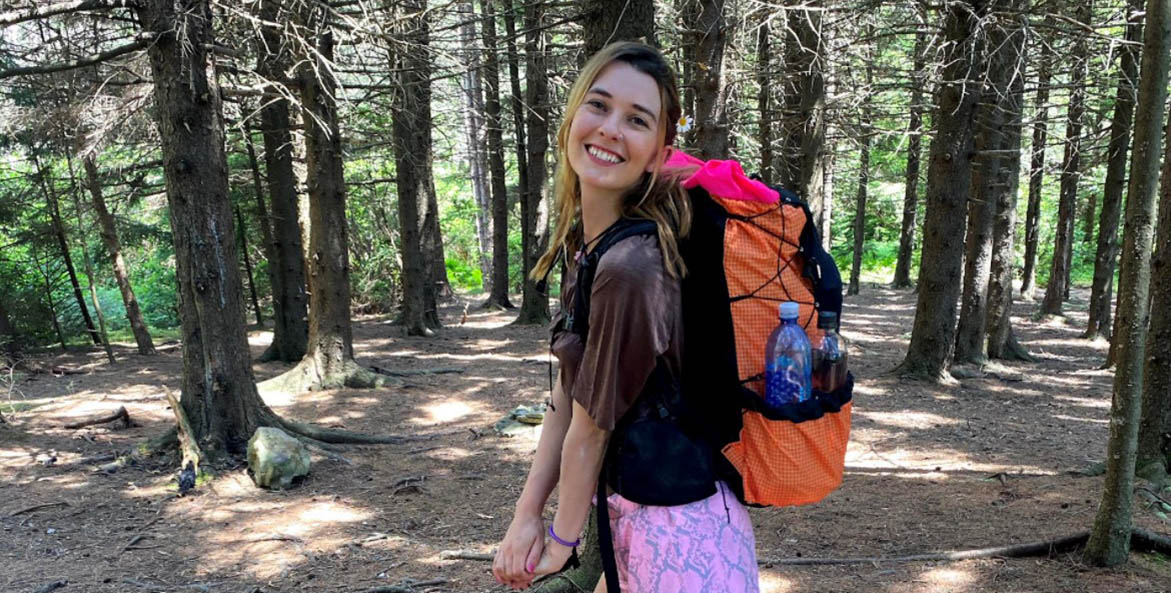If you asked, I couldn't tell you the first time I heard about the Chesapeake Bay Foundation. Growing up in Montgomery County, Maryland, the Bay was always a part of my life and was never more than an hour away. CBF's iconic blue "SAVE THE BAY" sticker dotted my childhood. It was on my mom's station wagon and my homeroom teacher's lunchbox. When I saw a job posting back in October for a restoration assistant position with CBF, I was instantly excited. I had been looking for an opportunity to shift my career into the non-profit environmental world, and CBF seemed like the perfect fit.
Despite knowing the organization existed for my whole life, I realized I wasn't sure what CBF actually did. Of course, I knew they saved the Bay, but I didn't know how. When I found out in my interview that I would primarily focus on planting trees, I was surprised, but also intrigued. The connection between Bay restoration and tree planting along the watershed is something I hadn't heard about before, but I know now that it is crucial and immensely impactful.
Polluted stormwater runoff across the watershed causes pollutants like nutrients, pesticides, and animal waste to enter the waterways that lead to the Bay. Because the watershed area is so large—spanning six states and the District of Columbia—excess nitrogen runoff from a farm in Frederick County can harm the Bay in Annapolis.
Enter the result of targeted tree planting: riparian buffers. Riparian forest buffers along streams and rivers reduce erosion and filter the sediment and pollutants that enter the water. They also provide physical benefits in the immediate area where they're planted by strengthening the topsoil and providing habitats for animals and insects. As a restoration assistant, I got a firsthand look at how these buffers work and how they're made.
For my first event with CBF, I attended a volunteer tree planting event at a farm in Frederick County, the REED Center for Ecosystem Reintegration. My role for the event was to assist the volunteers, answer questions about the process, and, of course, plant lots of trees myself! I listened alongside the volunteers about the impact of what we would be doing that day. Some volunteers were veterans at restoration. I spoke with one man who told me he came to every local event he could, because he loved feeling that he was actually making a difference.
Other volunteers knew about CBF and were finally making it out to an event; and some were hearing about both the organization and the idea of riparian buffers for the first time. One woman brought her 6-year-old son along, and they were able to learn together during the planting. She told me how she had never thought about the link between trees and the Bay before, but now that she knew, she would share this knowledge with others and get them to come out to future events. This feeling of inspiration she felt was a common sentiment among volunteers at all the events I attended.
As my time with CBF comes to an end, I'm feeling inspired as well. I can't wait to share this knowledge and experience with my fellow Marylanders who, like me, are familiar with the idea of Saving the Bay but not the process. Before I started this position, I knew I wanted to join a non-profit but I wasn't sure what I wanted to do. Getting to speak with volunteers and see their interest and excitement showed me how valuable this work is.
At these events this past season, I didn't just help plant hundreds of trees, I was part of a collaborative learning experience with my community. Just like the trees we planted, the knowledge we gained will have an impact much farther than we can see.
Interested in taking part in an upcoming tree planting? CBF will be hosting several across the watershed this spring! Now's your chance to get your hands dirty and do something great for the Bay. Take a look at our events calendar for details and to sign up.



